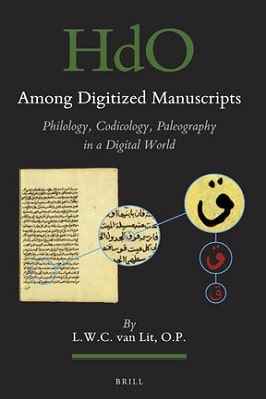
| Book Title | Among Digitized Manuscripts |
| Book Author | L.W.C. van Lit |
| Total Pages | 345 |
| Book Views | |
| Language | English |
| Book Download | PDF Direct Download Link |
| Get Hardcover | Click for Hard Similar Copy from Amazon |
Among Digitized Manuscripts
AMONG DIGITIZED MANUSCRIPTS
Among Digitized Manuscripts Philology, Codicology, Paleography in a Digital WorldBy L.W.C. van Lit, O.P.
Introduction
This book is for humanities students or scholars who are classically trained in handling manuscript materials and wish to take advantage of the incredible computing power at their fingertips but are at a loss where to begin. Some of the more technical parts of the book could be challenging, but a little persistence and practice, over time, should more than suffice.
I also hope to reach those who are more sceptical; who would agree with Paul Eggert, a book historian of modern English literature, when he wrote: “Speaking as a humanities scholar who lacks programming skills and ongoing access to a funded computing laboratory, the assumed advantage of the electronic environment is far less clear.”1 My response to this challenge is twofold.
First, as colleagues around you introduce computer-supported solutions into their workflow, they will gain an edge over you.
In fact, as digital methods gain wider currency, digitally restyling parts of our workflow will become the norm, and you may well be left behind if you decide not to do likewise. Second, and more importantly, I will argue that using computers for your erstwhile methodology and workflow requires some adaptions.
This is chiefly because digital photos impose specific limitations: their resolutions might be very low, their colors might not be true to life, or they can only be accessed from the museum website. Knowing how to spot and judge these limitations will be most useful to work efficiently and accurately, and this requires a little bit of knowledge about what digital photos of manuscripts are.
In my experience, the most daunting aspect of applying computer-supported methodologies in one’s work is its demand for a life-changing choice. Because, in this day and age, although technology is capable of doing more and more, students and seasoned scholars alike have had little or no exposure to it during their training.
The result is that the so-called ‘digital humanities’ (DH) pose a real conundrum: either one pretends it does not exist, or one takes it as a specialization at the graduate level.
In the second case, one stops becoming a historian of, for example, ancient Greece, medieval Islam, or the long eighteenth century, and is now on the path to becoming something else—a ‘Digital Humanist,’ where the ‘digital’ part dominates over one’s original expertise.
As a consequence, such a researcher tends to be restricted to communicating primarily with other ‘Digital Humanists’ and to publishing in their own specialized journals. The first group, meanwhile, does not invest significant time in more intricate and advanced, it becomes more likely that the technician will fail to provide a solution that truly encapsulates the problem.
And when the technology becomes more advanced, it becomes more likely that the scholar will fail to understand how it can be improved to meet their requirements. If we scale back our ambitions towards using and modifying the existing technology, it is possible to have scholars operate on their own, as is customary in the humanities. The tools discussed in this book require no generous grant—they are mostly open source; they are free to download, use, and adapt. Such small adaptions can then be shared back to the community, fostering the organic growth of our toolbox.
Finally, another issue for manuscript studies is that when it comes to digitized manuscripts, there is no prior agreed-upon conceptual framework, nor an acknowledged, basic skill set. This book addresses this matter by providing a conceptual and practical toolbox.
If something does not have a name, we literally cannot speak or think clearly about it,6 hence working out a conceptual framework is essential. Similarly, without discussing what we can do with digital tools at the beginner and intermediate levels, we cannot properly determine the skills we must develop as a normal part of our methodological toolbox.
Two things should be noted. First, this book is not about digitization itself. Parts of this book, such as Chapter Six, discuss work that leads towards selecting artefacts to be digitized, but for the most part, the assumption is that your manuscripts of interest have already been digitized.
If you wish to digitize artefacts yourself, or if you are a professional in this regard, you will profit most from Chapters Two and Three.
Second, neither is this book about plain-text analysis of repositories—such as Index Thomisticus,7 Thesaurus Linguae Graeca,8 Library of Latin Texts, al-Maktaba al-shāmila,9 Chinese Text Project,10 Perseus Digital Library, or Project Gutenberg, to name a few of the largest full-text databases from various fields. Such resources are a major advancement in the humanities, capable of yielding
To read more about the Among Digitized Manuscripts book Click the download button below to get it for free
Report broken link
Support this Website
Click here to join our Telegram group for new Books